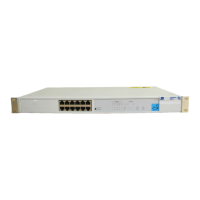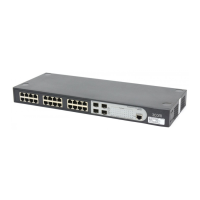16
N
ETWORKING
T
ERMINOLOGY
A
Network
is a collection of workstations (for example,
IBM-compatible PCs) and other equipment (for example,
printers), connected for the purpose of exchanging
information or sharing resources. Networks vary in size,
some are within a single room, others span continents.
A
Local Area Network (LAN)
is a network, usually in an
office, that spans no more than a single site.
Ethernet
is a type of LAN, referring to the technology used
to pass information around the network. It operates at
10Mbps (megabits per second).
Fast Ethernet
is a type of LAN that runs up to 10 times
faster than standard Ethernet. It operates at 100Mbps.
10BASE-T
and
100BASE-TX
are the names given to the
Ethernet protocol that runs over
Twisted Pair (TP)
cable.
10BASE-T runs at 10Mbps whilst 100BASE-TX operates at
100Mbps. The OfficeConnect hub uses RJ-45 type
connectors for connecting your TP network.
A
Network Loop
occurs when two pieces of network
equipment are connected by more than one path. Your hub
detects this and
partitions
(isolates) one of its ports to
break the loop.
A
segment
is the length of cable connected to a port.
Packets
are the units of information your workstations and
other equipment send to each other over the network. A
frame
is the data part of the packet and can be
unicast
(sent to a single device),
multicast
(sent to multiple
devices), or
broadcast
(sent to all devices).
Bandwidth
refers to the amount of network traffic the
network can hold at any one time (information capacity)
measured in
bits per second (bps)
. Workstations or
applications that use the network heavily are referred to as
using high bandwidth. Fast Ethernet has a higher
bandwidth than Ethernet, so it can cope with larger
amounts of traffic, which results in faster operation.
A
half duplex
link allows information to flow in either
direction, but not in either direction simultaneously.
Collisions
are part of normal ethernet operation and occur
if other network equipment attempts to transmit at the
same time. A sudden sustained increase in the number of
collisions may indicate a problem with the device.
3C16750_booklet.book Page 16 Tuesday, July 13, 1999 11:18 AM

